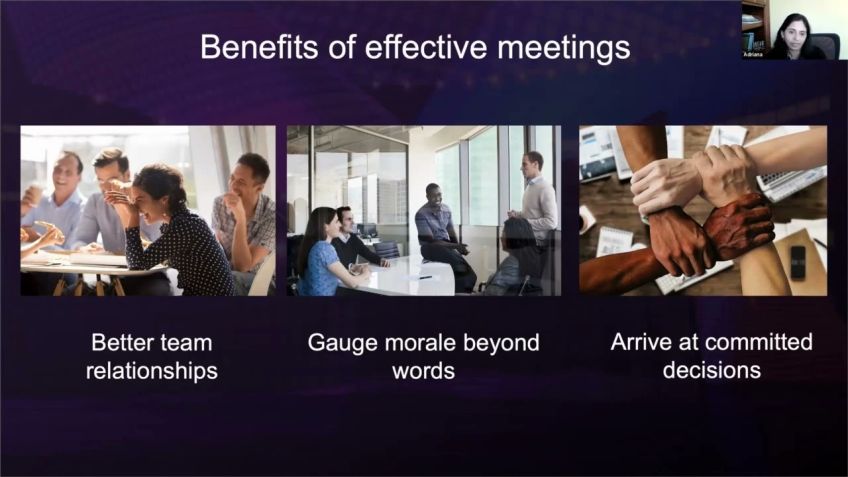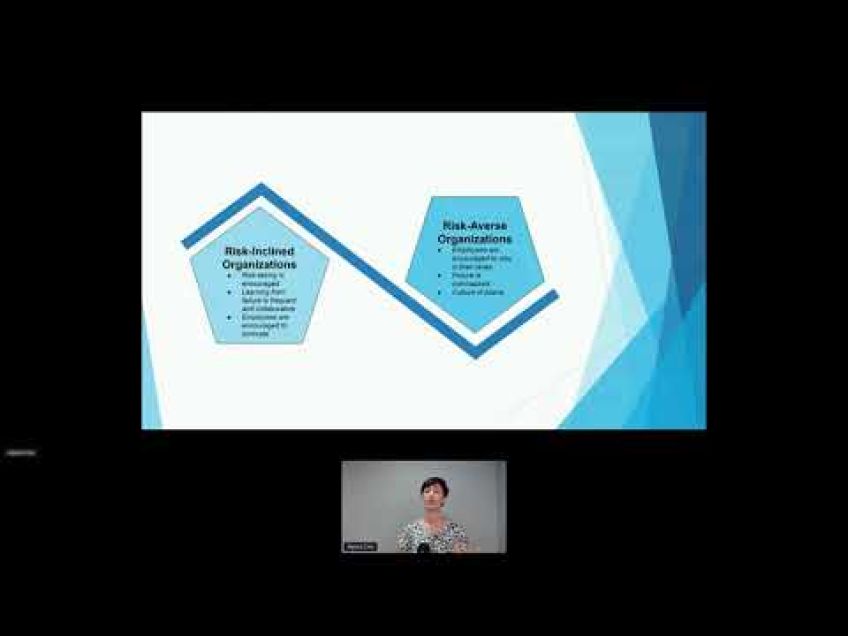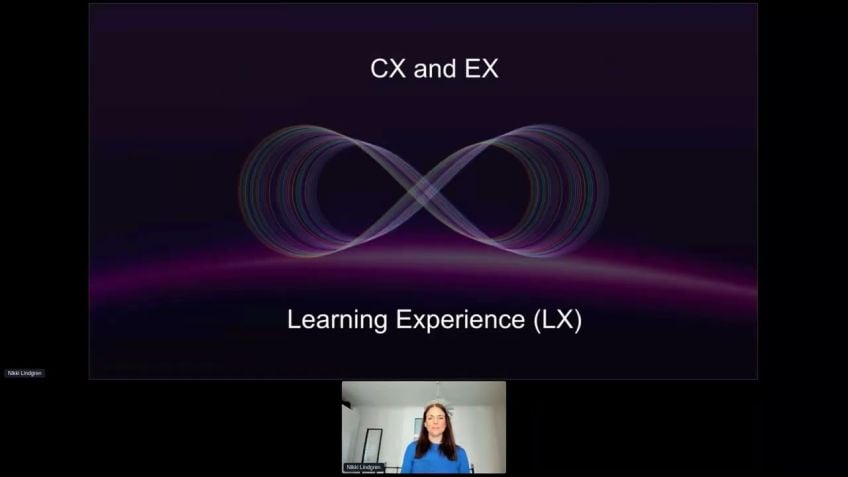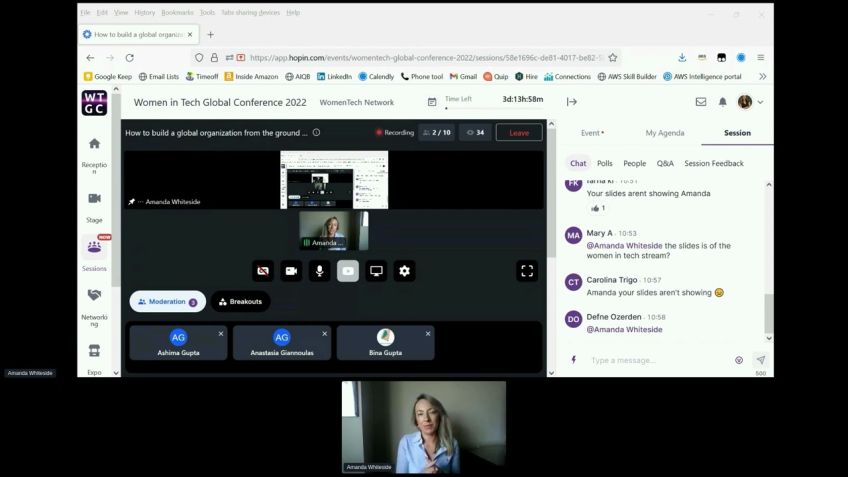From Chaos to Agile, and the demons along the way by Seemin Suleri
Reviews
Transforming Chaos Into an Agile World: A Case Study of the Two HH Group
Hello, I’m Su Su, and today I want to share our journey at Two HH Group - transitioning from chaos into an agile world. No matter where you are on your business journey, I hope you can take away a few ideas from our story that could help overcome your own challenges.
History of Two HH Group
First, let's understand how we started this journey. Two HH Group, a diversified holding company dealing with businesses like collectibles and babysitting services, is an old establishment of 75 years.
Thirty-five years back, the company decided to shift its operations from paper to code - Cobalt, to be precise. We moved our accounting, warehouse system, invoicing, marketing, and customer management all into this 'new' Cobalt system. It contributed a lot to the initial success of the company.
Decade-Ago Transformation
About a decade ago, recognizing the shifting customer base from offline to online, the company hired a small team to build a web presence. The aim was to create websites for different brands and integrate them with the Cobalt system. This move brought a sizable fraction of our customer base (almost 70%) to our online businesses.
Digital Transformation and Challenges
As progress ensued, the company planned an ambitious digital transformation three years ago to stay ahead of the competition. This transformation was not just about introducing new technologies, but revamping the system built around the Cobalt legacy, which was a massive challenge.
When I joined the team, my first task was to analyze the existing systems, have conversations with team members, observe the processes, and identify what wasn't working. As I dug deeper, it became evident that the startup culture that initially allowed us to build all these web systems had spiraled into vast chaos.
Embracing the Chaos
- Recognize it's Your Responsibility:
- Energize Yourself in Uncertainty:
When stepping into a world where things are out of control, the first step is to own the chaos. It doesn't matter if you are directly responsible for the situation or not, accepting that it's your responsibility is the first move towards initiating change.
Next, use stress to your advantage. Recognizing and accepting the uncertainty at hand and channeling that energy into excitement can help you to move forward.
Lessons from Two HH Group's Journey
People First
In our experience, one significant shortcoming was ignoring our most valuable assets – our people. I discovered that our teams were not motivated and lacked control over the work they did.
Establishing Autonomy and Encouraging Feedback
However, with the implementation of Agile, we witnessed a change. We prioritized our teams to be independent. This practice achieved a sense of ownership, making them more engaged. We also encouraged them to voice their opinions and give feedback. We listened and acted on it, creating a comfortable atmosphere for our team to share their ideas.
Servant Leadership
Leadership also played a crucial role in our success. Leaders at our organization acted as 'the oil' that keeps the machine going, solving problems for the team even ahead of time. We gave ourselves permission to make mistakes, leading and learning freely.
Moreover, we embraced our emotions to keep us human throughout this journey, all for the love of our team and the products we build.
The Result?
By tackling the chaos head-on, prioritizing our people, implementing Agile, and leading with empathy, the results were astounding. We achieved a tenfold increase in throughput and eightfold in velocity, hitting all of our milestones. Plus, our employee engagement and retention reached an all-time high.
So, this is our journey at Two HH Group, transitioning from chaos into an agile world. I hope my account offers you insights and inspiration for your journey. Thank you!
Video Transcription
Hello, I am Su su and I am the head of project delivery. It used to be and head of engineering for a company called Two HH Group.Um And today, I'm hoping to tell you a little bit of a story um of the journey um of how we move from an absolute chaos into a much nimble and agile world. Um And the idea is that I hope that some of it resonates with some of you and you might be able to take a few um ideas from our journey and maybe implement it in your own world and hopefully it will help you in overcoming some of your challenges as it helped us overcome some of ours.
So here's the a little bit of an effort to, to achieve that. So before we start off on, on anything regarding that journey, um one of the first thing is to kind of make you understand a little bit of the history of why or how we started on this journey in the first place. So 28, a group is a holding company for a number of business divisions and it deals with businesses like collectibles or coin stamps, painting, stuff like that. Um And also there is a, a another side business which is about babysitting, uh which links parents to babysitters and, and stuff like that, but kind of a diverse uh portfolio of companies under that group. Um So the company is 75 years old. So uh going back about 30 to 35 years ago, the company thought, well, you know, we're doing everything on paper. So I think the best thing is to um to kind of move towards a more um more automated automated system. So they built their first automated system, um accounting system in coal. So that did really well for the for the company and they decided to automate more things into Cobalt.
So they took the warehouse system, the invoicing system, the marketing system, the customer management and the like, you know, it all went into this amazing new Cobalt system back in the day. And so that did the company really well. Um fast forward to um just over a decade ago, they decided that, you know, we have a largely offline customer base, but now online is the thing. So we're going to move towards that direction. So they wanted to move towards that side and decided to um hire a small team that builds a kind of a web presence for them. And the idea was they're going to build all these um different brands and the websites for these brands that will integrate through the databases into the Cobalt system. So that both systems would run side by side eight years on from that point it did the company really well.
Um most of their customer, customer base, uh 70/70 percent moved to the online businesses and that kind of was a turning point for the business now. Um They wanted to move. So three, about three years ago, 34 years ago, they wanted to move towards this digital transformation.
So they wanted to innovate, they wanted to be the best in the market, they want to be ahead of the competition. But how do you do that with the system that is built around Cobalt legacy? So that was the big challenge. Um So that was the point at which they kind of hired me and brought me into the teens. And my biggest challenge was to go in and look at the systems and bring forward this systems transformation journey into the, into, into fruition. So it was the idea of bringing um newer technologies and, and, and, and taking the, taking the company into the future, um the company systems into the future. And so the moment I stepped in, um the, the first thing I would say is, is you, you are faced with a lot of a lot of uh massive tasks. Um The first thing is to analyze where you are, where the company actually um is what is the status of things So when I started looking in, um some of the things I did was to have conversations with the team members who have absolutely everyone involved um in the team and having conversations with people looking at the systems, looking at uh what was there, looking at, what wasn't there.
And what I discovered was that this opportunity um that was provided to them in a very start up culture. In the beginning when they were building these web systems had kind of resulted into really massive chaos. The team had grown from that small size building web systems into a much bigger team, but they hadn't kept control over the quality of things. There was the version control wasn't there for the core of the application logic, which meant you didn't know whether the systems on live or any different from systems on test and where things were and the people were all over the place they were moving, the projects weren't delivering and there was just everything a bit chaotic.
So in that, where do you start? It can become increasingly overwhelming. And I know that a lot of us either are in that situation or will be in some point in our lives. Um You step in and you find out this mammoth task and, and, and so where is the beginning of all of that um out of the process to even even move forward? So the first thing I would say is when your demon attacks you and tells you that this is too chaotic and you can't even start the process. I would recommend that you own the chaos. And by that, I mean, you step into this wild world where you do not really understand what it is all about. But you say, regardless of whether you started the chaos, whether you were responsible for where things are or not today, you are here, which means it's not a result of your direct actions, but you are responsible. Today. The day we start thinking that this chaos is ours. It is our responsibility is the day we start any real change. So overcoming the demon that tells you it's someone else's fault that the systems are so bad that you can't see your way unless you immerse yourself in the chaos and say I own it from today.
And it is my responsibility. You cannot move forward. At least that's what I found. And I think that in that moment, um most of us sometimes feel that the task is too big and whether we have everything it takes to make the next move, whether we have the skills or, or whether we are good enough. And you know, I think that women face it a lot more than others. Um And we know that imposter syndrome kicks in and you feel the stress of, of thinking that perhaps you are not good enough for it. And I would say when that demon comes across your way. You have to use that energy that it produces to your advantage. Um I would encourage you to watch Kelly mcgonigal's TED talk on how to make stress your friend. And in that she talks about how physiologically our bodies produce the same sort of reaction to when we are stressed and when we are really excited, it's about thinking about stress. So the, the next thing I did on my journey is to energize myself in the uncertainty and really feel that there is a big task ahead of me and I am standing in front of it, but I am standing there with my arms open and welcoming this uncertainty and feeling the excitement in order to move forward.
So I think that is, is, is is another thing that kind of helped in that journey towards, towards building the teams. Now coming back to the story, I was telling you about to a age group. So I took on the responsibility and I said from today, the chaos is mine and I'm going to, to energize myself and then be driven by this energy that I feel and this, this excitement I feel within myself. Um One of the things I would say, a great disservice that um that the the the management of this whole team had done is that they had forgotten about the main core of any successful project. The reason why a lot of the teams fail to deliver is not because of terrible processes or, um, or, you know, or, or infrastructure, let's say it's largely because of people. One of the main things they had done is they did not listen to the people. And when I say that, I think, um that is to me the core principle that agile sits around as well. When I went in and I spoke to every single person in the team, I realized that they were not given any kind of goals for development and training. They did not have any opportunity to voice their opinions. They had no control over the work that was assigned to them.
They had no control over anything, any decisions that were made in the direction that they were going, everything was passed down from various levels of management on to these people who were building these systems, not knowing why they were doing the work they were doing. So they were just trying to do within the domain of their control, the best job they knew how and that focused my attention towards the people people. Um And I feel that, you know, agile emphasis on, right, regardless of which framework or methodology within agile, you decide to use, it focuses heavily on the people. And when I say that what I mean is you need to make sure that your teams are autonomous. If they are given a task, they need to be able to organize themselves around the work that is assigned to them. In our case, the teams decided to split themselves into smaller, smaller sets, which means we had a large team working on a project. But within that, we had sub teams of 4 to 5, very small, which meant that you had a 1 to 1 interaction with your team lead, who understood you, who also understands what your motivations are, what your frustrations are. What are your dreams and aspiration, what sort of training and development you would like? So all of those things come into play.
We also made sure that people are feeling psychologically safe, which means that when they are able to disagree with you, and it means anybody head of engineering or tech lead or anybody, their opinion is heard they're listened to and they are responsible for giving us the feedback in their weekly one to ones or in their fortnightly retrospectives and whatever they say, we take actions based on that.
So they feel a part of the whole machine. And what happens after that is that when people give the feedback and they know you're listening to them, then they get more engaged because they know that you are focusing your attention where it needs to be. And one of those things that we found with other, with, with, with kind of what was happening before is that people would give their feedback and it would be just a check box exercise and nothing would happen eventually to the point where they just thought that it's just pointless to have any retrospective or any meetings because nothing happens off the back of that.
As leaders, we need to, we need to um and we need to demonstrate by our action that when something is raised, we are able to take action on it and take it seriously listening, truly listening to understand and, and changing things in order to improve. And some other things around people is that when we hire people, and I think that um recruitment is a major part of it when we are hiring people and they're becoming a part of the team. And also when they're leaving us in both on both sides of it, we, we welcome them with open arms and when we say goodbye to them, we, we make sure that it is a great goodbye and a thank you and acknowledgement for the service and hard work they've done. We are all human beings at the end of the day and we all deserve that attention. And that is, is a true game changer when it comes to creating a true cultural shift. The al the other thing I would also like to emphasize is that the role of leadership changes as we evolve. And in agile, it's all about servant leadership. And so for leaders, they need to become the oil that keeps the machine going. And traditionally, a lot of the leadership, uh a lot of the leaders in, in um in software teams have um have been promoted from software engineering positions, which means that they feel that now they don't have any value add, their main value add was development and it has been taken away from them.
But the idea is that you are the one who solves the problem for your team, even ahead of time, foresees it and clears the path so that the team goes through without a hurdle. And that is where you add your true value. So as leader, be comfortable in the journey and not being bothered by this demon. And you know, it might be a daily struggle for some and I know that people struggle with this a lot, but that oil is extremely important to keep all of the cogs going. And while you're doing that, you need to also make, allow yourself to, to make mistakes. You need to allow the and and be comfortable in the knowledge that you are making your own path. You might have a lot of inspiration, you might have some idols in the field, but you need to be the leader that resonates and do the things that resonate with you. And I would always recommend reading a lot to take inspiration again, but do what you think is the right thing for you and your team and listen to your team and create that environment. Um And, and I would say that that has been a really great source for me because where I had self doubt in my own ability, I knew that I was making my own path and doubt was a part of it.
So I learned to sit with it and therefore, and, and accept it in order to make my own path. Um, another thing is, is like as women, we sometimes get blame for being too emotional. And I've heard that, uh, and it, and it is amusing. However, I'd say that even if it's any emotion, stress or, or you know, um anger frustration or excitement or any of those things, you need to know that it is OK to feel that it is OK. It is a part of you. Um And, and, and take it all in and feel it and observe it and live with it that that is really powerful and do it for love, the love of your team, the love of the people around you, the love of the people you work for the love of the product. And I think that when you are energized and fueled by something as pure as love, the result is great. So in our little story from being completely chaotic to now working exceptionally well in terms of throughput and velocity, we are 10 times and eight times higher than what we used to be respectively. We are hitting all of our milestones. Our engagement, employee engagement is is and retention is, is, is all times high and everybody is engaged and they're having fun and we have an extremely engaged team.
So I hope in my little way, I have been able to um give you a little bit of a glimpse of the journey and perhaps given you some ideas for how you might be able to make a few changes or inspiration in yours. Thank you very much.





No comments so far – be the first to share your thoughts!